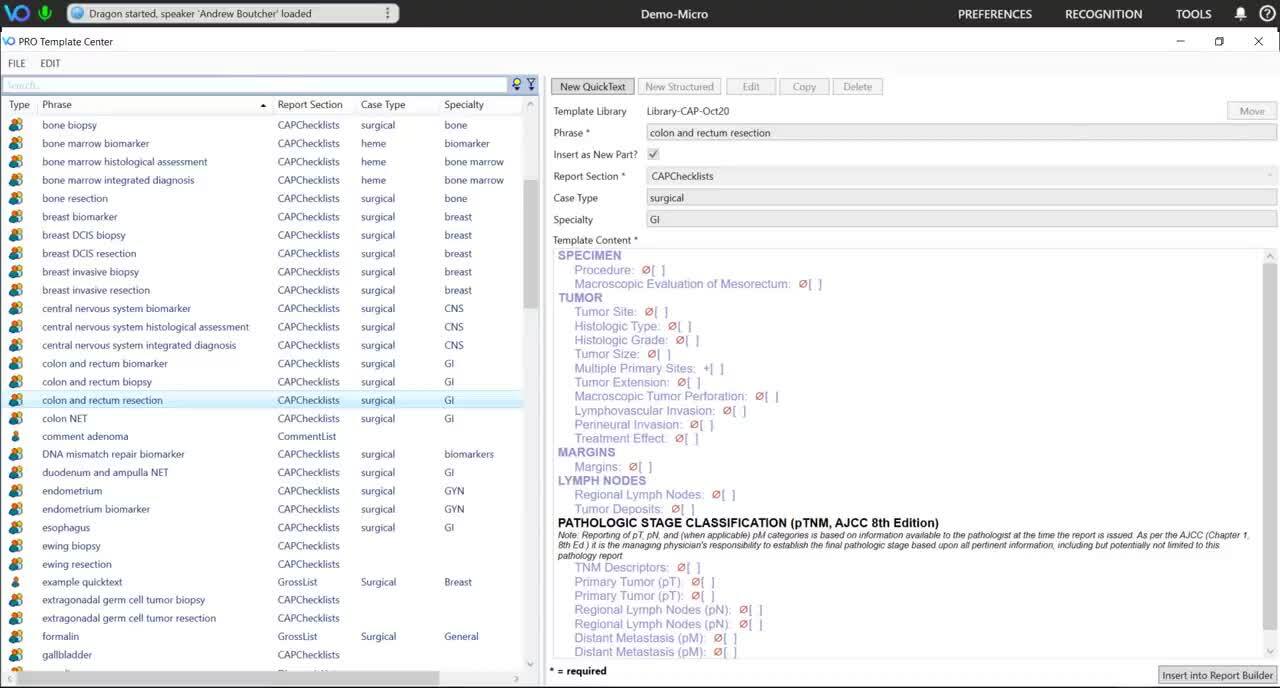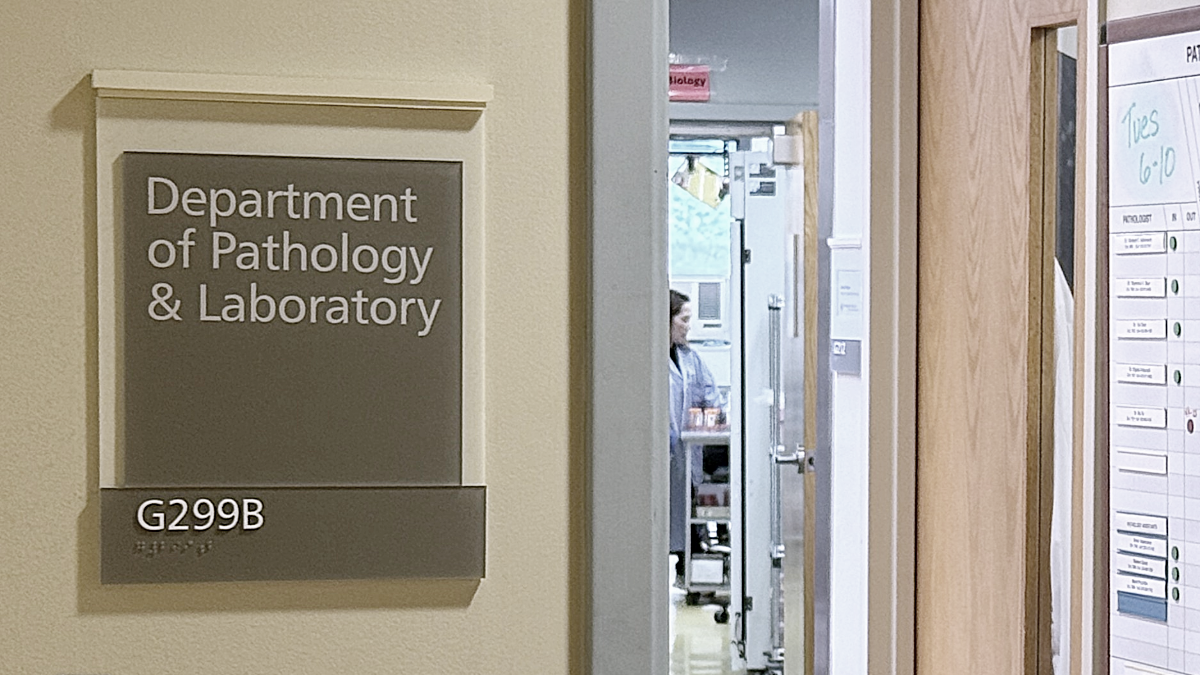What Is VoiceOver PRO Basic? A Powerful Starting Point for Smarter Reporting
VoiceOver PRO Basic may not be the flashiest product in our lineup, but it’s a workhorse. Simple. Reliable. Underrated. VoiceOver PRO Basic is the...
4 min read
Voicebrook Tuesday May 21, 2024

There are many benefits to using a pathology reporting solution that's equipped with speech recognition technology. From cost savings, to efficiency gains, to flexible options for each team member customized to their preferences. But plenty of Voicebrook's potential customers still want to know how the speech recognition capabilities of products like VoiceOver PRO or SynoptIQ will really impact their day-to-day workflow in the lab.
Speech recognition technology is a great tool to rapidly and accurately create text, but what happens when a potential user is resistant to using it, or struggles with the accompanying report creation workflow? What happens when the features address accuracy, but have no proven way to address laboratory system limitations, workflow, or individual user preference? Quite simply... it can translate to failure or limited success, leading to lost productivity and opportunity cost and ultimately frustration and regret.
Bottom line: not all speech-enabled reporting solutions are created equal. Be a smart consumer and consider the following points when you're in the market to make changes in your lab's reporting workflows.
When most organizations start their search process this is almost unilaterally the feature set that receives the most amount of focus. Of course the speech recognition accuracy is important, but that shouldn't be your only focus. The fact is, the remaining items on this list, coupled with the proper implementation and training methodologies, will play a much bigger part in delivering the benefits that laboratories are looking to receive from a speech-enabled solution.
.png?width=1200&height=628&name=physicians%20lab%20testimonial%20(2).png)
That said, you need to decide what your user tolerance is for initial misrecognition and make sure that the feature set provided allows all users (regardless of accent) to surpass the minimal accuracy level so that they can edit and correct their dictations in a rapid and simple manner.
Voicebrook’s pathology reporting solutions deploy Nuance's next-generation speech engine, DMO SpeechKit. DMO SpeechKit is the industry-leading cloud speech solution that offers 99 percent accuracy, automatic accent detection and audio calibration, and advanced speech with natural language commands.
“I never liked working with any voice recognition program before, because of my accent,” says Physicians Laboratory pathologist Dr. Tao Guo. “The pathology reporting systems hardly recognized my speech, and it was really miserable. And, as pathologists, we use a lot of different words that can be difficult for a system to understand.”
Physicians Laboratory upgraded their reporting solution to VoiceOver PRO with DMO Speechkit in 2023. “The first time I used PRO, I felt a big difference," Dr. Guo says. "I immediately felt that this system definitely can recognize my voice much better. I feel like the PRO voice recognition is really, really fantastic. Honestly, I think VoiceOver PRO is the best system I have ever used.”
Tip: Don't overlook the importance of a Pathology Speech Model. Recognition is typically dependent on the context of what is being dictated and a Pathology Speech Model ensures that your words (and the way that you phrase them) are being recognized in the context of a pathology report.
Laboratories need to decide whether all users will be dictating and self-editing (which provides the most benefits). If not, then the lab will need a hybrid solution that allows for traditional transcription workflows. This can include an integrated traditional digital dictation solution or a delegated solution, where initial text is transcribed by the speech recognition engine and edited by a third party.
Laboratories also need to consider whether the system allows for direct dictation into the AP System text editor of choice, and if not, what tools are available to input text where it needs to go in the LIS/AP system. Are there tools available to help navigate the AP system workflow and eliminate unnecessary user steps from the workflow? These are all important questions to consider, if the intention is to select a unified platform that addresses the needs of all users without leaving any user behind.
Tip: Make sure you consider per diems and residents where the learning curve of teaching self-editing workflows may not be worthwhile.
Not every user will use the reporting software in the same way, and giving them options is often a good thing. On the flip side, providing too many choices in an unmanaged environment can also cause more support headaches down the road, when every user has developed their own unique (and undocumented) way of doing things. In order to balance individual preferences with the ability to support those users, there are some questions you should ask.

Does the system allow for user preference of input devices like microphones and foot pedals, and can the associated preference settings for these devices vary and be identified on a user basis? Does the solution have customization tools that provide users with variable commands for speech navigation, and can these commands be centrally managed by an administrator? Can users customize their vocabulary and can vocabulary customizations be shared across groups of users? Can voice commands easily be shared by groups of users?
Tip: The importance of user management tools for devices like foot pedals and microphones is magnified when users share workstations.
The importance of templating as an accuracy tool is often overlooked in the selection process. Templates can serve to significantly reduce the number of words users dictate, which in turn lowers overall initial report misrecognition. Templates also significantly reduce dictation time, since much of the report is already created. Lastly, they serve to provide standardization and formatting that can assist the patient care team in identifying critical areas of the report.

Here are some questions that you should ask about templating. Does the solution provide pathology-specific templating capabilities? If so, does the templating solution allow for individual and group templates? Can the templates be sorted contextually by report type? Do the templates provided increase the report accuracy and readability, and ultimately reduce report creation time? Do the template tools allow for both free-text and synoptic reporting? Are there template automation tools that allow for default text and quick navigation? Do the template creation tools allow for multiple formatting features that align with your AP system formatting options? Can templates be navigated by voice? Can the input devices (microphone and foot pedal) be used to navigate templates without voice commands?
Voicebrook's pathology reporting solutions can do all of the above.
Speech technology can be used to manage workflow and call out specific safety features in the underlying AP system. If implemented properly, it can do so without forcing users to take extra manual steps. Beyond addressing the integration needs of any particular AP system and reporting workflow, make sure the features offered address other complementary documentation activities of the pathologists and enhance patient safety.
Since most speech recognition-based reporting solutions are directly integrated with the AP system, it is important to consider what happens when the AP system is not available. Can users still dictate reports or will this downtime cause reporting delays that impact patient care? That won't happen with VoiceOver PRO or SynoptIQ... these solutions will automatically switch to offline mode, allowing users to continue creating reports and immediately upload them as soon as the AP system is back online.
In addition, managing large sites can be tricky when multiple users have their own personal speech profiles, vocabularies, voice commands, and device settings. As a result, you have to ask if the solution provides for central management of user speech profiles, vocabularies, device settings and templates.
Do you have questions about how to implement a speech-enabled pathology reporting solution in your lab? We are here to help!
.png)
VoiceOver PRO Basic may not be the flashiest product in our lineup, but it’s a workhorse. Simple. Reliable. Underrated. VoiceOver PRO Basic is the...

Across the country, rural hospitals are facing a financial emergency. According to a recent report by the Center for Healthcare Quality and Payment...

Did you know that the average person living in America now spends ten or more hours a day in front of a screen? This trend is not slowing down! For...